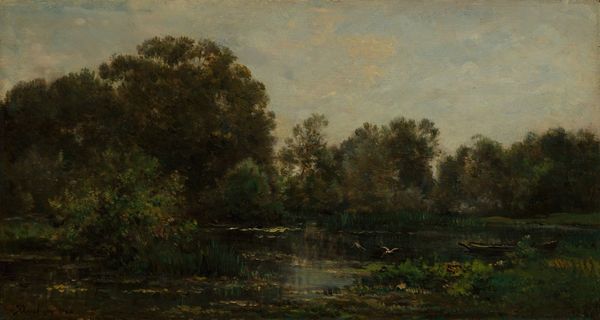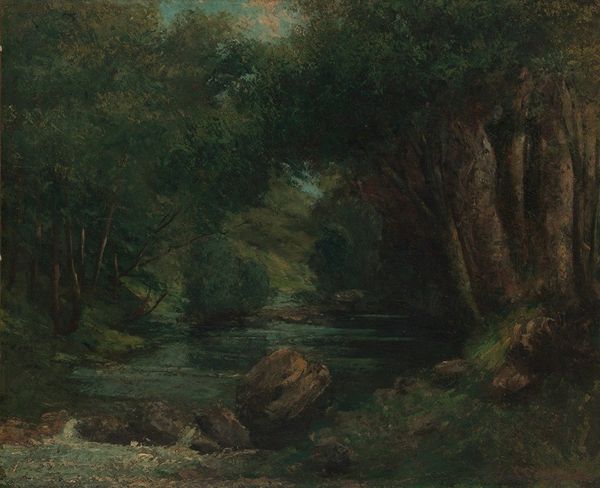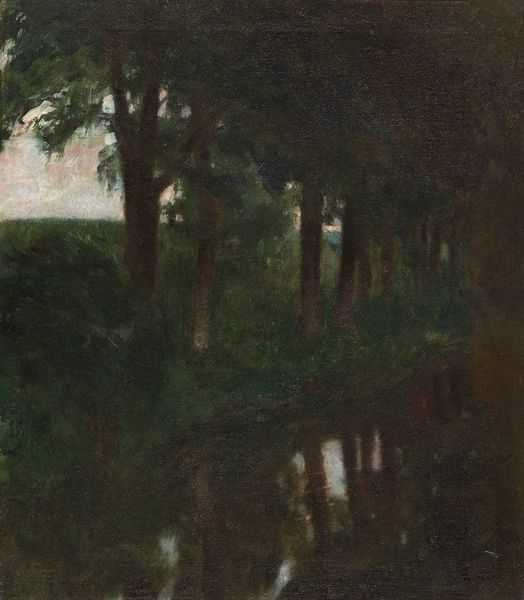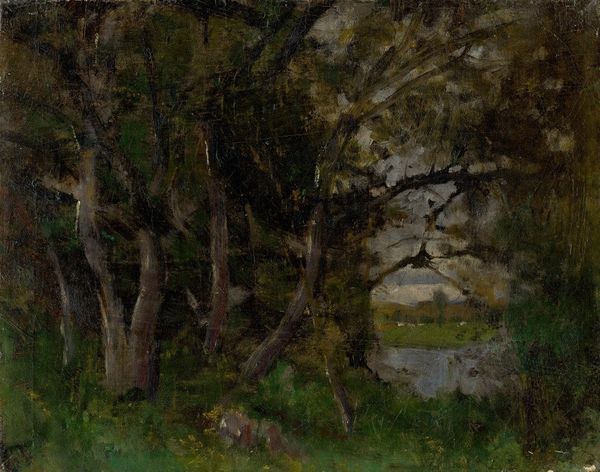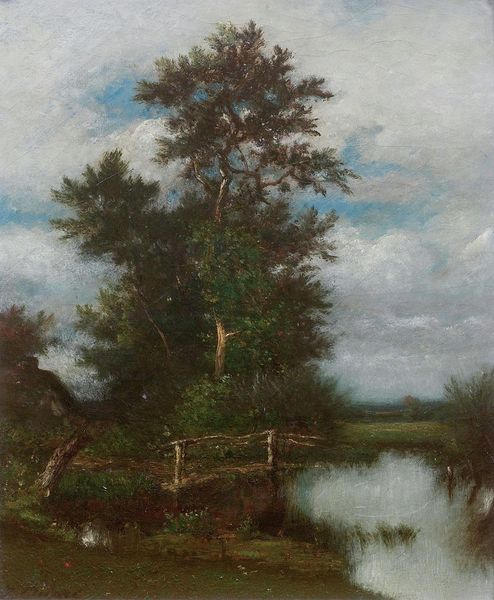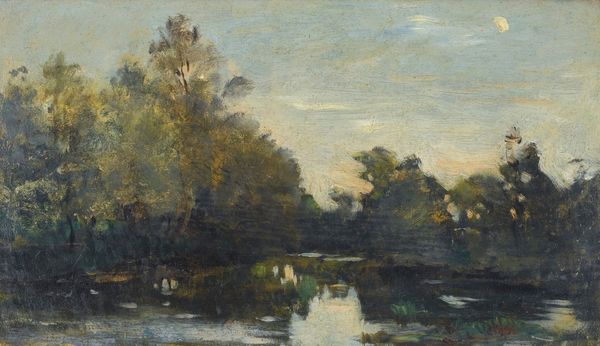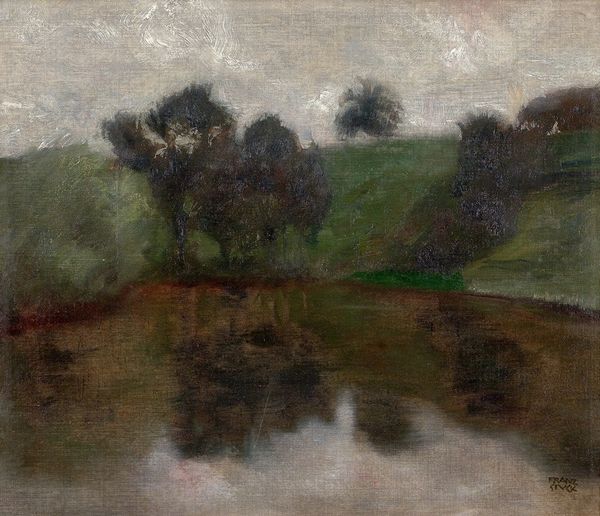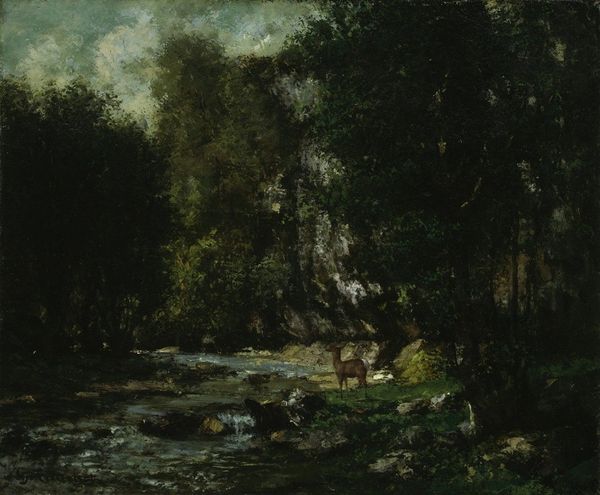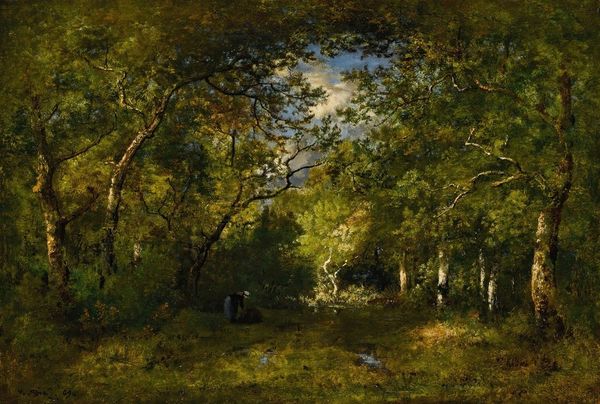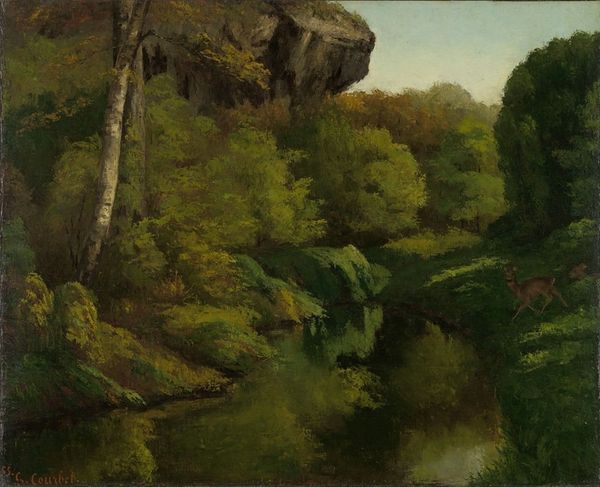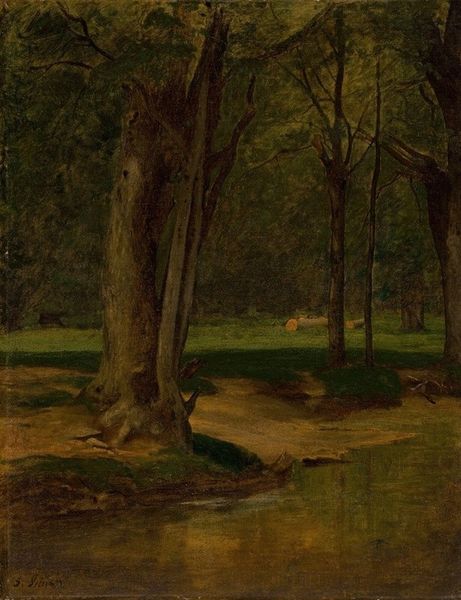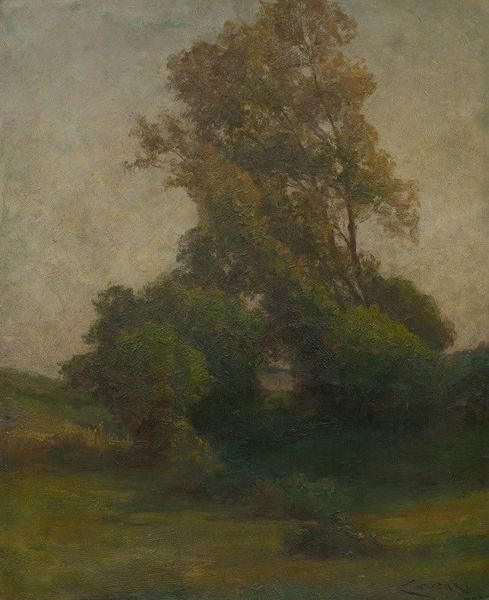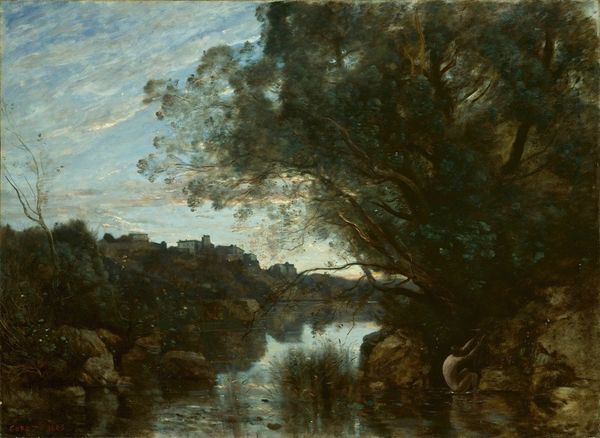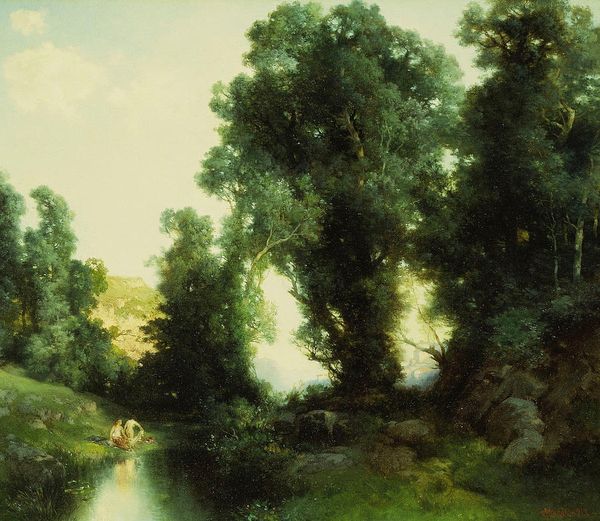
#
red and green
#
landscape
#
impressionist landscape
#
possibly oil pastel
#
nature
#
naturalistic tone
#
seascape
#
painting painterly
#
watercolour illustration
#
watercolor
#
environment sketch
Copyright: Public Domain: Artvee
Curator: Here we have Gustave Courbet's "A Brook in a Clearing," painted in 1862. It’s a marvelous example of his commitment to Realism in landscape. Editor: It feels so... contained. A very specific moment captured. The color palette, mostly muted greens and browns, contributes to this almost secretive, hushed feeling. Curator: Absolutely. Courbet aimed to depict the natural world as he observed it, rejecting the idealized landscapes of the past. Note how the brook dominates the canvas, winding its way into the dense forest. Editor: That body of water serves almost as a mirror, a dark reflective surface that multiplies the density of the surrounding woodland. Water, of course, is an incredibly potent symbol, frequently associated with the subconscious, fluidity, and constant change. What about the politics of that at the time, the image being reproduced, being seen? Curator: Courbet's commitment to representing nature "as it is" had huge political implications. By refusing to paint scenes that idealized or glorified power, he challenged the conventions of the French Academy and its control over artistic taste, especially during the Second Empire. Landscapes became another stage where artists questioned prevailing societal norms. The Realists argued painting should represent the modern world and the everyday lives, so what one choose to paint certainly would send a clear political message. Editor: I wonder about the brook itself. While nature abounds, it’s untamed nature, that perhaps represents something about the need to challenge social constructions? Curator: Perhaps. And Courbet's style, his bold brushwork and earthy tones, contributes to this unvarnished portrayal. It rejects the picturesque in favor of something more authentic and immediate. In this, he's paving the way for later landscape painters like the Impressionists. Editor: The composition and the use of a subdued palette invite the viewer into a private space, it does feel intimate as you see how Courbet must of appreciated nature. A wonderful moment. Curator: Indeed, this piece embodies both Courbet's dedication to realism and the burgeoning desire among artists to challenge established power through their choice of subject matter.
Comments
No comments
Be the first to comment and join the conversation on the ultimate creative platform.
